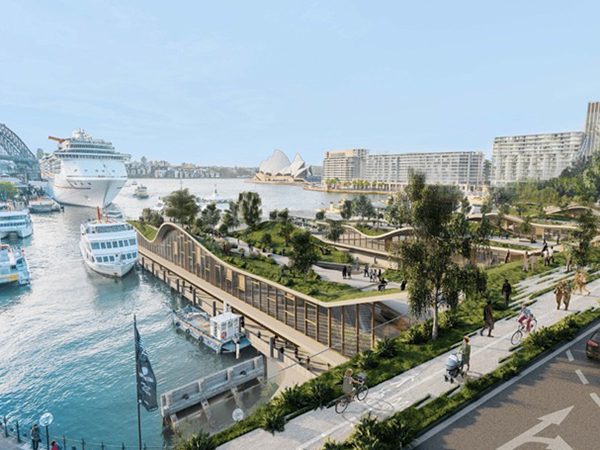The NSW Government has been orchestrating an inequitable tender process, dishing out hundreds of thousands of taxpayers’ dollars and giving local and international capital investment development companies the exclusive right to provide design ideas to redevelop Sydney’s Circular Quay, according to a Sydney-based architecture firm.
Recognising the inequality of what it calls “tight-lipped tenders” is Sydney architectural firm CplusC, which says it only recently became aware that larger architecture firms had been discreetly/selectively commissioned through partnerships with major investors and developers.
“Since September 2015, large profit driven consortiums have been well-remunerated by the NSW government to provide concepts costing the tax payers hundreds of thousands in design fees,” says Clinton Cole, principal and founder of CplusC.
“There hasn’t been any transparency whatsoever provided on this process nor have there been any attempts to engage smaller firms or even the community in preliminary design discussions, considering public feedback on the area has only been welcomed as of August, six years after early designs began circulating,” says Cole.
The redevelopment of what is arguably Australia’s most historic and iconic location is expected to blow out the original budget as some earlier concepts sought to eliminate the Cahill Expressway and bury the state heritage-protected Circular Quay train line– potentially costing the state’s taxpayers billions over the $200 million originally slated for the redevelopment.
While only a small team of eleven staff, CplusC has been recognised by industry for its design work on both international and national stages, including winning two Architecture + Design 2019 Sustainability Awards.
CplusC says it is making its designs public to pressure the Government’s decision makers to include submissions from smaller, locally based creative firms uninvited and underrepresented in the process.
“The intention,” it says, “is to open the project to a competition, which echoes the belief of Ken Maher, previous NSW and national president of the Australian Institute of Architecture (AIA).”
“The government is paying lip service to the public but have already wrapped up initial discussions with nine major bidders and now awaiting design schemes from two shortlisted developer and design firm partnerships, leaving little room for any meaningful community input,” says Cole.
“We believe this process has been undertaken privately to suit the government’s veiled interests and its consistently delayed delivery timeframe. Just like with the Barangaroo debacle this ultimately blocks citizens from having any power to scrutinize proposals and contribute to the democratic development of harbour shorelines in their own city and proven to benefit private stakeholders above the public interest.”
“The Berejiklian government continues to make this grossly blind assumption that larger architecture firms are exclusively able to produce designs for projects of this scale.”
“This is simply not true,” says Cole.
Unlike the other designs that have so far been put forward, CplusC says its plans provide elevated public access to roof areas with open space over the wharves. These open spaces are the most important aspect of the proposal as it provides parks and green space for the public, granting vantage to the Opera House and Sydney Harbour Bridge, which is something the larger architectural firms have ignored completely to date.

Its proposal aims to reinvigorate Circular Quay as a place of cultural harbour significance to both Aboriginal and non-Aboriginal people as a place of first contact. The planned roofs will reference the form of the Australian eucalyptus leaf, traditionally used for its naturally restorative properties in many Aboriginal communities.
CplusC says its design will allow for greater pedestrian access from the city through to the wharves and include newly created commercial, retail and public spaces, with farmers markets, restaurants, bars, and a public library proposed as some of the new ways to create a global, around-the-clock hub suitable for such a buzzing family-oriented tourist destination.
“Our intention is as much about raising awareness for the redevelopment of Circular Quay and providing a fair platform for smaller design firms alongside the broader public to have input in the design of their city as much as our firm providing a specific design solution,” says Cole.
Images: Supplied

